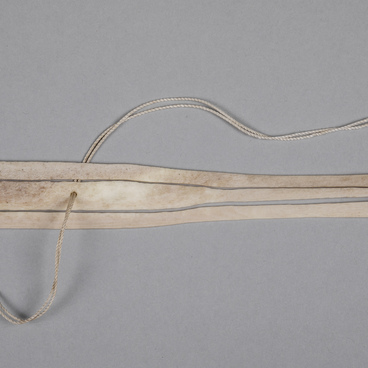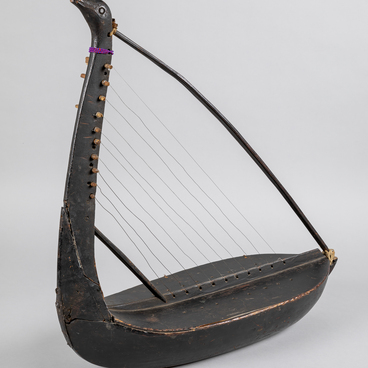Narkas-yukh, or nars-yukh, is a traditional Khanty five-stringed plucked instrument. When translated from the Khanty language, “nars-yukh” means “playing tree”.
With its elongated shape, the instrument resembles a boat, however, Khanty craftsmen say that the narkas-yukh rather resembles a human body.
The instrument is made of a single hollowed out log of spruce or cedar. It can also be made from several planks of wood glued together.
Traditionally, the instrument features a soundhole at the right side of the top sound board under the strings. At the left side the strings are attached to a nail or metal rod that completes the body.
In contrast to modern instruments with metal strings, old ones feature strings made of deer tendons attached to wooden pegs. Professional musicians use guitar strings, but even today amateur musicians use improvised material like wire and unwound cables as strings.
The Khanty and Mansi treat the narkas-yukh with great care and respect: when transferring the instrument from one place to another the instrument is covered with a kerchief and carried over the doorstep “head-first”. A shaman would never sell a nars-yukh, as it was believed that one could sell one’s soul along with the instrument.
The nars-yukh is often mentioned in literature. According to Mansi legends, when Khont-Torum — the god of war — was captured, he played the sankvyltap (the Mansi name of this instrument) to put the guards to sleep and escape, asking the mouse to play instead of him when he was gone. When the guards awakened they discovered that it was the mouse playing the sankvyltap — not the prisoner.
When playing, the nars-yukh is placed flat on the knees, and turned sideways. The musician’s hands rest against the edge of the instrument. The instrument is played with both hands: one hand plucks the strings and the other mutes them. Sometimes both hands are used to play the melody. Previously, only men played the nars-yukh and performed heroic songs about the feats of the bogatyr warriors, epics and dance melodies at the bear festival. Today, women also learn to play this instrument.






